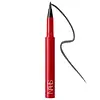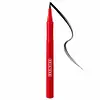What's inside
What's inside
 Key Ingredients
Key Ingredients

 Benefits
Benefits

 Concerns
Concerns

 Ingredients Side-by-side
Ingredients Side-by-side

Water
Skin ConditioningAmmonium Acrylates Copolymer
Butylene Glycol
Humectant1,2-Hexanediol
Skin ConditioningAcrylates Copolymer
Beheneth-30
CleansingAminomethyl Propanol
BufferingPolyglyceryl-3 Disiloxane Dimethicone
Skin ConditioningCitric Acid
BufferingSimethicone
EmollientBentonite
AbsorbentSorbitan Palmitate
EmulsifyingSorbitan Laurate
EmulsifyingHydrogenated Palm Glycerides
EmollientTocopherol
AntioxidantSorbitan Trioleate
EmulsifyingSucrose Palmitate
EmollientPhenoxyethanol
PreservativeCI 77266
Water, Ammonium Acrylates Copolymer, Butylene Glycol, 1,2-Hexanediol, Acrylates Copolymer, Beheneth-30, Aminomethyl Propanol, Polyglyceryl-3 Disiloxane Dimethicone, Citric Acid, Simethicone, Bentonite, Sorbitan Palmitate, Sorbitan Laurate, Hydrogenated Palm Glycerides, Tocopherol, Sorbitan Trioleate, Sucrose Palmitate, Phenoxyethanol, CI 77266
Water
Skin ConditioningMethylpropanediol
SolventStyrene/Acrylates Copolymer
Styrene/Acrylates/Ammonium Methacrylate Copolymer
Cellulose
AbsorbentPEG-60 Hydrogenated Castor Oil
EmulsifyingCoco-Glucoside
CleansingPoloxamer 407
EmulsifyingCitric Acid
BufferingPhenoxyethanol
PreservativePotassium Sorbate
PreservativePhenylpropanol
MaskingSodium Benzoate
MaskingCaprylyl Glycol
EmollientSodium Laureth-12 Sulfate
CleansingSodium Lauryl Sulfate
CleansingSodium Dehydroacetate
PreservativeBHT
AntioxidantCI 77266
Water, Methylpropanediol, Styrene/Acrylates Copolymer, Styrene/Acrylates/Ammonium Methacrylate Copolymer, Cellulose, PEG-60 Hydrogenated Castor Oil, Coco-Glucoside, Poloxamer 407, Citric Acid, Phenoxyethanol, Potassium Sorbate, Phenylpropanol, Sodium Benzoate, Caprylyl Glycol, Sodium Laureth-12 Sulfate, Sodium Lauryl Sulfate, Sodium Dehydroacetate, BHT, CI 77266
 Reviews
Reviews

Ingredients Explained
These ingredients are found in both products.
Ingredients higher up in an ingredient list are typically present in a larger amount.
Citric Acid is an alpha hydroxy acid (AHA) naturally found in citrus fruits like oranges, lemons, and limes.
Like other AHAs, citric acid can exfoliate skin by breaking down the bonds that hold dead skin cells together. This helps reveal smoother and brighter skin underneath.
However, this exfoliating effect only happens at high concentrations (20%) which can be hard to find in cosmetic products.
Due to this, citric acid is usually included in small amounts as a pH adjuster. This helps keep products slightly more acidic and compatible with skin's natural pH.
In skincare formulas, citric acid can:
While it can provide some skin benefits, research shows lactic acid and glycolic acid are generally more effective and less irritating exfoliants.
Most citric acid used in skincare today is made by fermenting sugars (usually from molasses). This synthetic version is identical to the natural citrus form but easier to stabilize and use in formulations.
Read more about some other popular AHA's here:
Learn more about Citric AcidPhenoxyethanol is a preservative that has germicide, antimicrobial, and aromatic properties. Studies show that phenoxyethanol can prevent microbial growth. By itself, it has a scent that is similar to that of a rose.
It's often used in formulations along with Caprylyl Glycol to preserve the shelf life of products.
Water. It's the most common cosmetic ingredient of all. You'll usually see it at the top of ingredient lists, meaning that it makes up the largest part of the product.
So why is it so popular? Water most often acts as a solvent - this means that it helps dissolve other ingredients into the formulation.
You'll also recognize water as that liquid we all need to stay alive. If you see this, drink a glass of water. Stay hydrated!
Learn more about WaterWe don't have a description for CI 77266 yet.